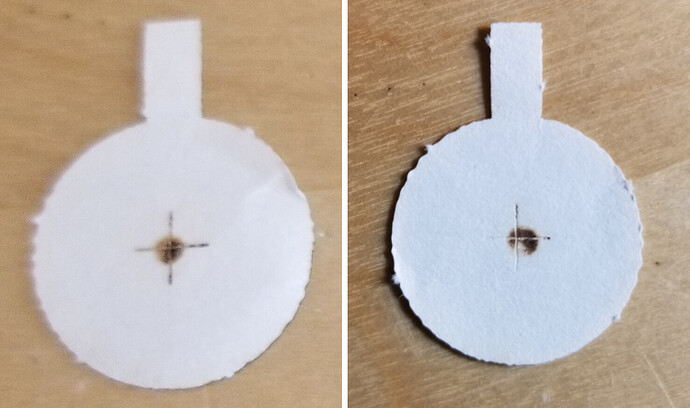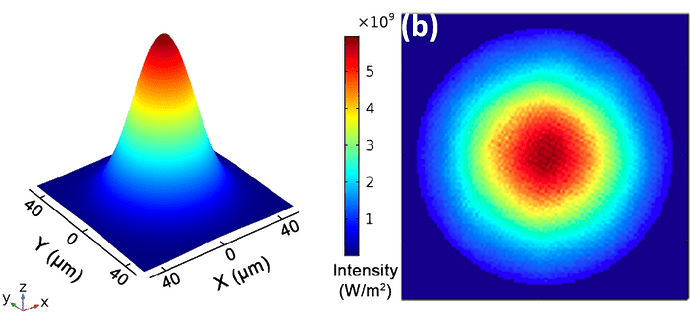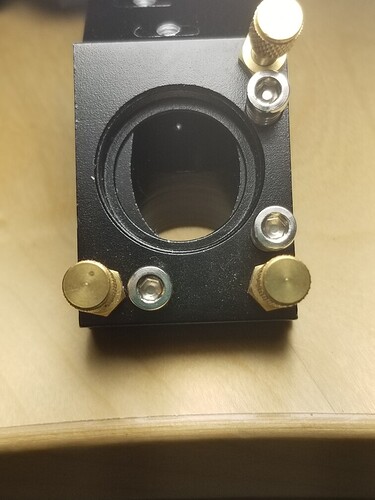If these three exist
- proper tube operation
- clean and aligned optics
- proper focus
They work… One of these isn’t …
The response about m1 isn’t what I think @bernd.dk is talking about. I believe he’s referring to the power distribution in the beam emitted form the tube. This is known as TEM00 resonance or mode, for a properly working tube.
A change from TEM00 to another mode happened to me over a three day weekend when I was out doing other things. The machine was and has been aligned very precisely, m1 and m2 dead center. Left was m2, both near and far pulses. Right is m1 after the 3 day weekend.
You need to have as close to a Gaussian power distribution across the beam as possible. This is generally referred to as the M2 or the beam factor, and is used when computing the effects on a beam/lens combination. This is a 3d type graphic for Gaussian power distribution… However on the right is how it will show on your target.
This can’t be fixed by any other method except a tube replacement.
When you check your alignment, you need to start at m1, checking this should be part of the alignment procedure. You can’t align a tube in a mode other than TEM00.
Keep in mind that not all openings are centered. This is the head from my machine…
Always nice for you to post photos, might look fine to you, but we may see something you don’t… Besides a picture is worth a thousand words.
The two inch lens (50.8mm) compared to a one inch lens (25.4mm) or your 35mm is relatively straight forward. The shorter the lens the smaller the spot and the more shallow the depth of field. A longer lens has a larger spot and a larger depth of field.
Shorter lens, smaller spot (more power) and is best for engraving… longer lens larger spot (less power) and is best for cutting thicker materials.
The calculator will allow you to compute this for your specific lens.
Best of luck
![]()


